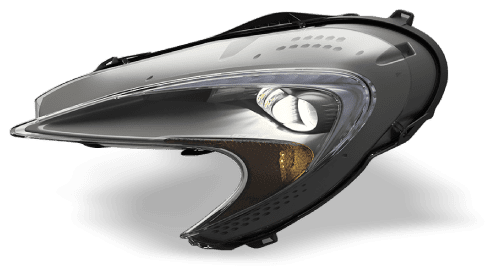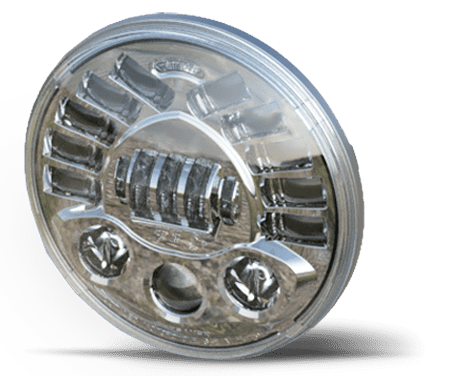
A Look at Why Some LED Lights Are Brighter Than Others

Known for their energy efficiency, longevity, and environmental benefits, LED lights have revolutionized how we think about illumination. But one question that often arises is why some LED lights seem noticeably brighter than others. When you’re choosing LEDs for a vehicle, understanding the nuances of LED brightness can help you understand the difference between each bulb.
Let’s examine the science behind LED brightness and the factors you should consider to ensure you’re making the best choice for your lighting needs. Take a look at why some LED lights are brighter than others so you can find the perfect option for your upcoming project.
The Role of LED Lights in the Automotive Sector
LED technology has significantly transformed the automotive industry, offering unparalleled advantages in terms of performance and efficiency. Modern vehicles increasingly rely on LED headlights, taillights, and interior lighting because of their superior brightness, longer lifespan, and lower energy consumption compared to traditional halogen or incandescent bulbs.
LEDs ensure better visibility on the road, enhancing safety for both drivers and pedestrians, particularly in low-light conditions or adverse weather. Their fast response time makes them ideal for brake and indicator lights.
Additionally, LED lights are highly adaptable, allowing manufacturers to design innovative and sleek lighting solutions that enhance a vehicle’s aesthetic appeal. With their durability and reduced maintenance requirements, LEDs reduce overall ownership costs, making them a sustainable and cost-effective choice.
By incorporating LED technology, the automotive sector not only boosts functionality but also aligns with energy-efficient and environmentally conscious trends. You can find truck LED lights at J.W. Speaker to elevate your vehicle or even an entire company fleet.
Now that you know how LEDs function in the automotive sector, let’s take a closer look at what dictates brightness levels.

How Lumens Define LED Brightness
To understand why some LEDs shine brighter, it’s essential to know about lumens. Lumens are the standard unit of measurement for light output. Essentially, they quantify the total amount of visible light emitted by a source. Unlike wattage, which measures energy consumption, lumens tell you how much light you’re actually getting.
For many years, wattage has been closely associated with brightness, but this can be misleading when dealing with LED technology. A 60-watt incandescent bulb delivers around 800 lumens, while an LED producing the same 800 lumens might only consume 8-12 watts. This efficiency is what makes LEDs stand out. However, the lumen rating alone doesn’t explain why some LEDs appear brighter in specific contexts, which brings us to other influencing factors.
Various Factors That Impact LED Brightness
While LEDs are energy-efficient, a higher wattage LED generally produces more lumens. It’s important, though, to balance wattage with energy savings. High-wattage LEDs are commonly reserved for applications such as streetlights or industrial facilities, where robust brightness is essential.
Another critical element is the quality of the LED chip itself. The chip is the heart of the LED and directly determines how effectively electrical energy is converted into light. Premium chips from reputable manufacturers naturally offer higher lumen output and better longevity compared to lower-quality alternatives.
The overall design and materials used in an LED fixture also play a vital role in how bright it is. Factors such as heat dissipation, lens design, and color temperature all influence how bright the light appears to the human eye. For example, LEDs with excellent heat sink designs can operate at higher intensities without degrading, maintaining consistent brightness over long periods. Similarly, a focused lens can make the same number of lumens feel brighter by concentrating the light on a specific area.
An LED light bar or spotlight for a vehicle can leverage the benefits of this lighting tech. However, the design of the lens can make the light output from each look different and perform better in certain applications, whether highlighting one area or a wide space while driving.

How Technology Improves LED Brightness
Technological advancements have increased the brightness and efficiency of LEDs. Innovations such as high-power LED diodes allow for compact lighting solutions with extraordinary illumination potential, making them perfect for car headlights.
Another breakthrough is the development of quantum dot technology, which enhances color accuracy while maintaining brightness. Quantum dot-enhanced LEDs produce more vibrant colors without losing lumen output, providing a superior user experience.
Smart LED systems are also contributing to improved brightness adjustability. Imagine driving a car and having the headlights automatically adjust to an optimal brightness level based on the amount of sunlight outside. Such systems enhance usability without requiring constant manual adjustments.
How To Choose the Brightness That’s Right for You
For outdoor applications, such as car headlights, prioritize LEDs with high lumen output and durable, weather-resistant fixtures. If light distribution is a concern, consider LEDs with custom lenses designed to spread light evenly across a larger area.
Understanding why some LED lights are brighter than others requires a knowledge of how and why to match up the right LEDs to the right application. Keep in mind that brightness isn’t just about lumens. Consider the light’s color temperature, measured in Kelvin, which affects how the light looks. A 2700K warm white LED seems softer and cozier, while a 5000K daylight white delivers a cooler, crisper brightness.
The Benefits of Understanding LED Brightness
Some LEDs are brighter than others, and understanding why that is will help you unlock the ability to pick products that align perfectly with your requirements. Whether you are reducing energy consumption in your commercial truck, creating a tailored ambiance at home, or investing in lighting for demanding work environments, being informed sets you up for long-term satisfaction.
Advancements in LED technology will only continue to enhance light bulb brightness, efficiency, and adaptability. By staying knowledgeable about lumens, chip quality, and innovative technology, you ensure that your lighting choices result in better performance and lasting value. Now is the time to prioritize innovation and precision in LED implementation, ensuring safer, more efficient, and visually striking lighting solutions.
There are many ways you can utilize LEDs on your vehicle. Headlights, taillights, and light bars are just the start when it comes to finding great ways to leverage this amazing technology. Plus, the evolution of high-quality LED lights in the automotive sector is far from over and will lead to even greater advantages for drivers in the future.


